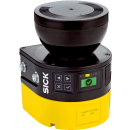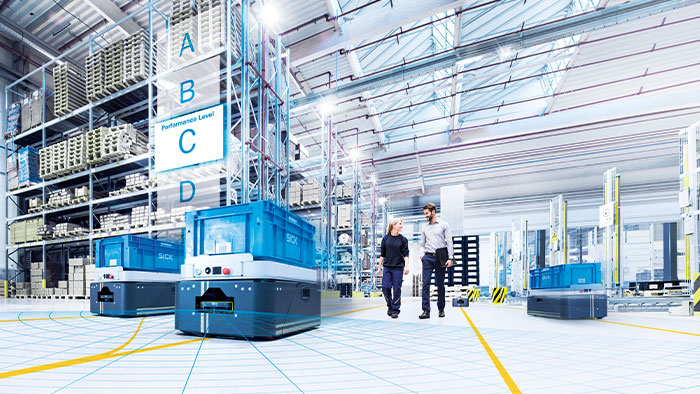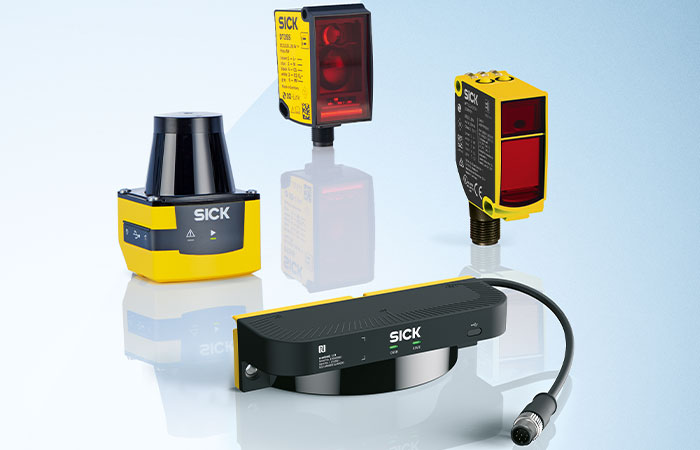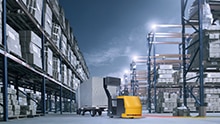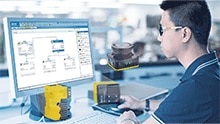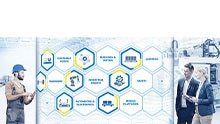The human body can only produce the vital nutrient vitamin D through exposure to the sun. But without protective measures, this poses serious risks which people alleviate by means of protective measures tailored to their particular constitution and environment. Such “risk-tailored safety solutions” are also necessary for robots, which are encroaching more and more into our work and daily lives. They are used in all kinds of environments from intralogistics to service and are becoming increasingly diverse in their size, weight and speed. To achieve a suitable and appropriate level of machine safety, SICK implements the legally required process of risk assessment as efficiently as possible. The company’s comprehensive safety portfolio makes it possible to implement the most economically optimal solution in every case.
Why sitting in the cellar while the sun is shining is not the best solution: Risk-tailored safety solutions
A risk must be reliably categorized before precisely analyzing the hazard it poses. This applies always, and to all areas of human life. In the case of a risk assessment for sun exposure on human skin, for example, the safest option for avoiding UV radiation would be to sit in the cellar. But since humans run a serious risk of falling ill without sunlight, they weigh up the risk and have developed a number of solution strategies: Depending on the intensity of the radiation, they might wear long sleeve, light colored clothing, stay in the shade and/or use sunscreen with a suitable UV filter.
Scalability with a comprehensive portfolio
Graduating the measures according to the specific environmental factors when selecting the right protection also leads to a successful outcome in the case of safety solutions in the industrial and service-oriented world of work. At SICK, scalability means precisely adapting the safety solution to the identified hazard and having a portfolio that can adequately cater for the diverse range of applications. The company's offerings range from products and systems with a very high risk reduction capability of performance level e (Pl e) (safety light curtains) and Pl d (safety laser scanners) through to solutions that can protect against lower risk hazards with Pl c (safety multibeam scanners) or even Pl b (safety distance sensors). Furthermore, the individual components can also be incorporated into a system solution to provide protection that is tailored to customer- and application-specific requirements (AOS object detection system).
The preliminary risk assessment starts by defining the limits of the machine functions and identifying hazards. The subsequent risk estimation and risk assessment follows the rule of thumb: risk is equal to the extent of damage times likelihood of occurrence. Depending on the particular application, this gives either a high or low risk and is then classified into the required performance level (PL r) according to ISO 13849-1.
Precisely-tailored solutions after a thorough analysis
As a solution for reliable collision avoidance and protection of people when using heavy mobile robots with PL d, for example, SICK will always recommend using the nanoScan3 with its low space requirements and the rugged microScan3. Whether a solution for PL d is really always required in an application with a mobile robot, however, is determined from a thorough analysis on a case-by-case basis: Does the application involve an automated area with restricted access where only trained staff are present? How fast does the vehicle move, how heavy is it (when loaded), and how long is the braking distance? In addition to answering these questions, the expert team comprising users, manufacturers of mobile robots, and SICK safety experts will also investigate how the risk could affect the severity of injury, how frequently and for how long the risk arises, and what possibilities there are for avoiding it.
Severity – what is the degree of severity of the risk?
When looking for a solution that is precisely tailored, adequate for the specific requirements, and nevertheless safe, it is necessary to first determine the “severity”, i.e. the degree of severity of the risk. Automated guided carts (AGCs), which carry only a small load and are narrow, light and slow, fall at one end of the scale. Fast and large vehicles with a high tare weight and heavy load represent the other extreme.
Different requirements on the safety functions will apply depending on the vehicle characteristics. The main direction of travel of heavy vehicles, for example, can be protected using a microScan3. But how can reversing of the same vehicle be adequately protected? Vehicles generally travel more slowly in this direction, which has a large effect on the degree of severity of the risk. A risk assessment might determine that the safety function for reversing can be adequately protected with PL c or even PL b. A similar thing applies for stationary applications for access and presence control, for example pick-and-place robots. Lower risk severity levels apply for non-hazardous machine functions, light workpieces, and the application of very low forces during processes. Risk-tailored safety solutions are therefore able to achieve an optimum balance between the competing aspects of risk reduction according to severity and cost effectiveness (efficiency, availability).
Probability – how likely is the risk to occur?
A second aspect relates to the “probability”, i.e. the likelihood that hazardous situations will arise. A low risk exists, for example, for cleaning robots operating after hours in a shopping mall or airport with no customers or foot traffic and only trained cleaning staff present. In these cases, a risk-tailored safety solution based on PL c would be perfectly suitable for protecting the application.
Based on just a few examples, it is clear that industry-typical standard solutions are not always technically necessary and economically sensible. Only by determining the actual risk can an efficient solution be found that is also safe, economical and productive. Furthermore, this approach opens up new possibilities for innovative and intelligent applications beyond mobile applications.
Overcoming functional limitations
With its comprehensive portfolio of sensors, SICK offers a scalability that can also overcome functional limitations. For example, SICK has expanded its TiM series of 2D LiDAR sensors with safety sensors that meet PL b. Being safety sensors, the TiM7xxS variants also deliver for the first time safety-related measured values, thereby opening up new possibilities besides the familiar protective field. This makes it possible, for example, to not only detect the presence of a person but also their position. A possible use case might be a position-dependent speed reduction in order to reduce the minimum distance of a safety-related switch-off and to optimize the availability of the mobile platform. Users benefit from a lower investment cost and a faster time-to-market.
Risk minimization for the primary goal of protecting people also opens up further possibilities and can offer welcome added benefits. For the example of graduated measures for avoiding UV radiation, if a person protects themselves against excessive UV radiation by using an umbrella, the surrounding materials will also benefit from this, e.g. the patio furniture and building materials will have a longer service life. Likewise, safe risk-tailored safety solutions can also help avoid pure property damage in human-robot collaboration.
The key to the productivity of each of these solutions is a tailored, precise analysis and a clear classification of the risks. SICK has a complete range of systems and products for this and provides tailored and on-site advice to enable intralogistics specialists and AGV manufacturers to avoid overdimensioned and unnecessary “cellar solutions”.


